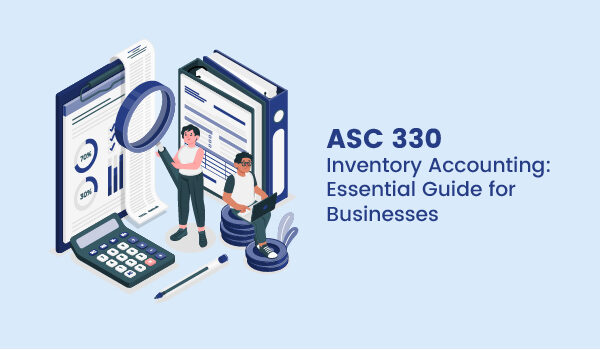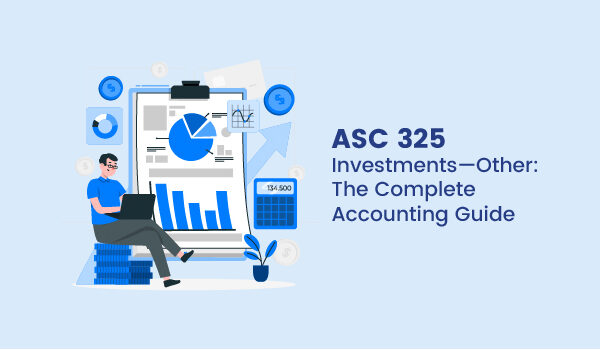ASC 340 Accounting Simplified: How to Properly Capitalize Deferred Costs & Other Assets

If your company capitalizes advertising, prepays expenses, or pays sales commissions, you must understand ASC 340 – Other Assets and Deferred Costs. Misapplying these rules can lead to inflated assets, compliance risks, or even audit flags.
In this article, we will explain ASC 340 in plain terms—covering key subsections like capitalized advertising (ASC 340-20) and deferred contract costs (ASC 340-40)—so you can confidently classify, amortize, and report these items.
What Is ASC 340?
ASC 340 is part of the U.S. Generally Accepted Accounting Principles (GAAP) and governs the treatment of deferred costs—expenses paid or incurred now that are expected to benefit future periods.
In plain terms, ASC 340 tells you when it’s appropriate to capitalize a cost (record it as an asset) instead of expensing it immediately. This standard ensures financial statements reflect the true timing of economic benefits.
Some of the most common deferred costs include:
- Prepaid insurance, rent, or licenses
- Sales commissions related to contract acquisition
- Advertising costs that benefit future periods
When these items meet the criteria for asset recognition, ASC 340 outlines how to record, amortize, and disclose them.
ASC 340-10: General Guidance on Deferred Costs
ASC 340-10 provides the umbrella rules for deferred costs that don’t fall under more specific guidance. Here’s what you need to know:
You can capitalize costs only if they provide a probable future economic benefit.
The asset must be:
- Owned or controlled by the company
- Measurable with reasonable certainty
- Expected to benefit beyond one reporting period
Example: A software company that prepays $12,000 for an annual cloud subscription would capitalize the full amount as a prepaid expense and amortize it monthly.
ASC 340-20: Capitalized Advertising Costs
Not all advertising is expensed immediately. ASC 340-20 allows for capitalization, but only in specific cases where the advertising will benefit future periods.
Capitalizable Examples:
- Direct-mail catalogs intended for multiple campaigns
- Advertising costs incurred but not yet aired or displayed
- Media space purchased in advance for a campaign launching next quarter
Accounting Rules:
- Costs should be capitalized when incurred if the advertising hasn’t occurred yet.
- Once the ad runs or the benefit starts, the cost must be amortized over the benefit period.
Required disclosures include:
- Total advertising costs capitalized
- Amortization method
- Expense recognized during the period
ASC 340-40: Deferred Contract Costs
Introduced alongside ASC 606 (Revenue from Contracts with Customers), ASC 340-40 focuses on the costs of acquiring and fulfilling contracts, especially sales commissions.
To capitalize a cost under ASC 340-40, it must:
- Be incremental (wouldn’t have occurred without the contract)
- Be recoverable through the contract’s future revenue
Examples:
- Commission paid to a rep for signing a customer contract
- Legal or onboarding costs incurred specifically for a customer deal
These costs are capitalized and amortized in line with the pattern of revenue recognition under ASC 606.
Capitalization vs. Expense: Decision Framework
Knowing whether to capitalize or expense a cost can be tricky. Here’s a simple decision-making framework to help you apply ASC 340 consistently:
- Does the cost provide a future economic benefit?
- Will the benefit extend beyond one reporting period?
- Is the cost directly linked to revenue or contract acquisition?
- Can the cost be measured reliably?
If the answer to these is “yes,” capitalization is likely appropriate.
Here’s a quick reference table:
| Cost Type | Capitalize or Expense? | Relevant ASC | Notes |
| Sales Commission | Capitalize | ASC 340-40 | If tied to a specific contract |
| Prepaid Rent | Capitalize | ASC 340-10 | Amortized monthly |
| One-time Online Ad | Expense | ASC 720 | No future benefit beyond the period |
| Catalog for Next Season | Capitalize | ASC 340-20 | Amortized once campaign runs |
Common Examples & Journal Entries
Let’s bring these concepts to life with real-world examples:
Example 1: Capitalized Sales Commission (ASC 340-40)
Scenario: Your company pays a $5,000 commission when a customer signs a 2-year service contract.
Initial Journal Entry:
Dr Deferred Contract Costs $5,000
Cr Cash (or Commissions Payable) $5,000
Amortization (monthly over 24 months):
Dr Amortization Expense $208.33
Cr Deferred Contract Costs $208.33
Example 2: Prepaid Insurance (ASC 340-10)
Scenario: You prepay $12,000 for annual insurance.
Initial Entry:
Dr Prepaid Insurance $12,000
Cr Cash $12,000
Monthly Amortization:
Dr Insurance Expense $1,000
Cr Prepaid Insurance $1,000
Example 3: Deferred Advertising (ASC 340-20)
Scenario: You pay $20,000 in Q4 for a campaign launching in Q1.
At Payment (Q4):
Dr Deferred Advertising $20,000
Cr Cash $20,000
When the Campaign Runs (Q1):
Dr Advertising Expense $20,000
Cr Deferred Advertising $20,000
Key Disclosure Requirements
To stay in full GAAP compliance, companies must include transparent disclosures for any capitalized costs governed by ASC 340. These disclosures help investors, auditors, and stakeholders understand the nature and timing of your deferred costs.
Required disclosures include:
- Total amount of costs capitalized during the period
- Amortization methods used (e.g., straight-line, revenue-based)
- Expense recognized for the period
- Any significant judgments or estimates made in applying the standard
- For advertising costs: disclose the policy on capitalizing and expensing ad expenditures
These are typically presented in the footnotes to the financial statements. Companies that fail to disclose these items may face audit issues or investor pushback.
Compliance Tips & Best Practices
Navigating ASC 340 can be tricky without a system in place. Here are some practical steps to help you stay on the right side of the accounting rules:
1. Establish a Clear Capitalization Policy
Document what types of costs your company will capitalize under ASC 340. Include criteria, thresholds, and expected amortization periods.
2. Align with ASC 606 for Contract Costs
If you’re capitalizing sales commissions or onboarding fees, ensure the amortization pattern matches revenue recognition under ASC 606.
3. Maintain Strong Internal Controls
Regularly review deferred costs for impairment or obsolescence. Require approval and supporting documentation for all capitalized entries.
4. Use Accounting Software for Tracking
Implement systems that automate amortization schedules, track deferred costs, and prompt review deadlines.
5. Consult with Auditors Early
If you're unsure whether a cost should be capitalized, get feedback before year-end close or audit time.
ASC 340 vs ASC 720: Know the Difference
Confusion often arises between ASC 340 and ASC 720 (Other Expenses), especially when dealing with marketing and advertising costs. Here’s how to tell them apart:
| Feature | ASC 340 | ASC 720 |
| Purpose | Accounting for deferred/capitalized costs | Accounting for current period expenses |
| Capitalization Allowed? | Yes, if future benefit exists | No – typically expensed immediately |
| Example Costs | Future-use catalogs, prepaid rent | One-time digital ads, sponsorships |
| Focused On | Assets and contract costs | Operating expenses |
Pro Tip: If an advertising cost does not clearly provide a benefit beyond the current period, ASC 720 applies, and it should be expensed immediately.
In Closing
Getting ASC 340 right isn’t just about compliance—it’s about presenting a clear, accurate financial picture. By properly capitalizing and amortizing deferred costs, your financials will reflect true economic value and align with GAAP standards.
- Understand the 3 key subsections: ASC 340-10, ASC 340-20, ASC 340-40
- Use judgment carefully and document your policies
- Align with ASC 606 when dealing with contract costs
- Know when to expense vs. capitalize
Frequently Asked Questions
Q 1: Can all advertising costs be capitalized under ASC 340-20?
Ans: No. Only advertising that benefits future periods (like catalogs or advance media buys) can be capitalized. Routine digital ads or one-time campaigns must be expensed under ASC 720.
Q 2: How is ASC 340-40 linked to ASC 606?
Ans: ASC 340-40 supports ASC 606 by allowing you to capitalize costs to obtain a contract, such as sales commissions, as long as you expect to recover them through future revenue. The amortization must mirror the revenue recognition pattern.
Q 3: What's the difference between deferred costs and prepaid expenses?
Ans: Prepaid expenses are a subset of deferred costs, typically related to future services (e.g., rent, insurance). Deferred costs also include more complex items like sales commissions or advertising to be used in future periods.
Q 4: How often should deferred costs be reviewed?
Ans: At least annually, or when triggering events (like contract cancellations or business changes) occur. If a deferred cost no longer provides future benefit, it should be written down or impaired.
- Phone Number: 917-415-6166
- Email Address: njamil@njcpausa.com
- Address: 51 Atlantic Avenue, Suite 202, Floral Park, NY 11001








